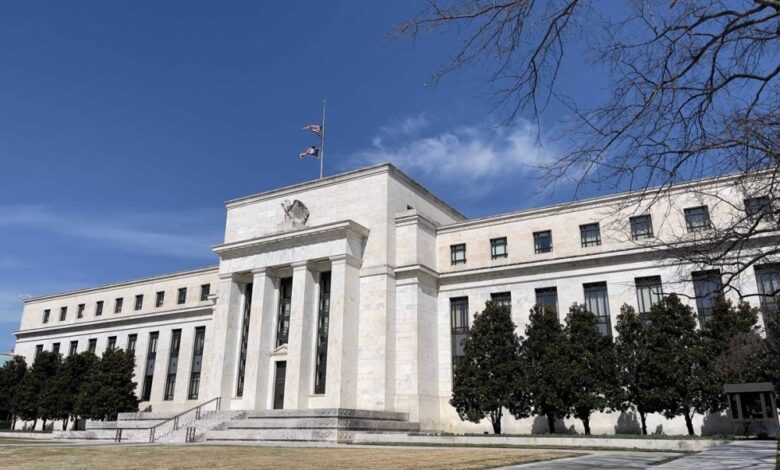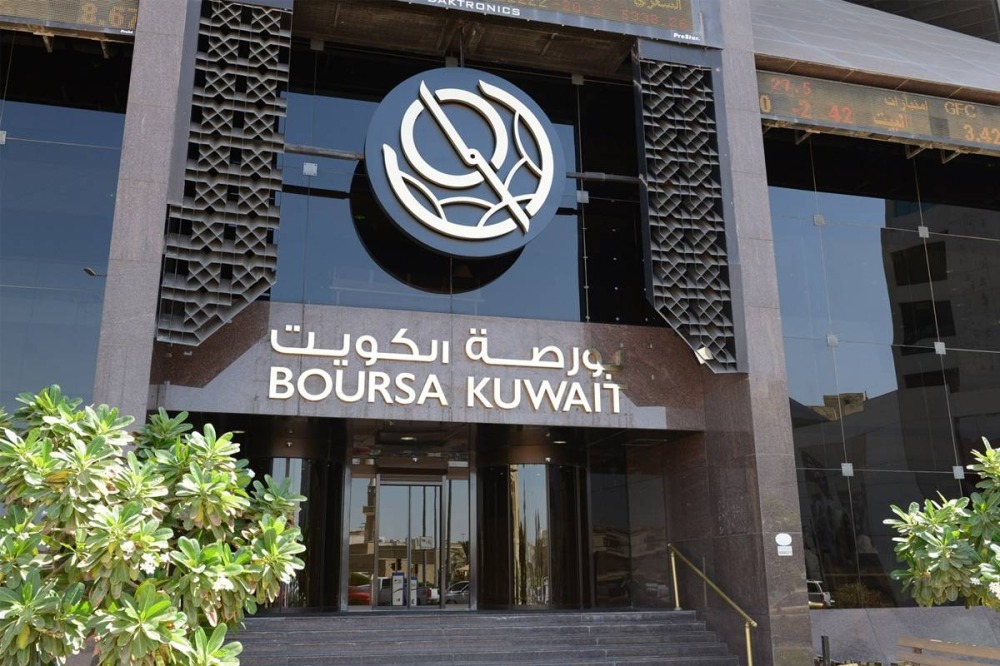Kuwait’s leadership tackling urgency with focused precision
Kuwait, for some time now, has been governed by an administration prioritizing urgent matters, even as all issues have become pressing, requiring a depth of focus and extreme attention to handle them effectively

-
Financial market indices in the Gulf region experienced losses in six out of seven markets in April. However, this was attributed to negative geopolitical developments, particularly the direct clash between Iran and Israel, rather than expectations regarding interest rates.
-
Al-Shall Center voiced worry over a notably heightened economic uncertainty, citing the US Federal Reserve’s swiftly changing inflation predictions over the last four months as a key indicator
Al-Shall Center voiced worry over a notably heightened economic uncertainty, citing the US Federal Reserve’s swiftly changing inflation predictions over the last four months as a key indicator. It said, the management of Kuwait under such conditions is surprising, given the need for deep and focused attention in handling all matters, especially during these critical times.
Al-Shall has stated in its weekly report that the US Federal Reserve, during its meetings on April 30 and May 1, decided to stabilize interest rates and ruled out raising them in the near future. This move was aimed at dispelling short-term fears and their repercussions, although it also implies a potential reduction later in the current year.
The report added that there was no significant reaction from central banks in the region within the expected limits. It noted that, similar to the decline of the Dow Jones index, financial market indices in the Gulf region experienced losses in six out of seven markets during April. However, this was attributed to negative geopolitical developments, particularly the direct clash between Iran and Israel, rather than expectations regarding interest rates.
According to the details in the news, Al-Shall’s weekly economic report highlighted that expectations regarding the trajectory of interest rates fluctuated between the beginning of the year and the end of last April or the start of the US Federal Reserve meetings.
The year began with a sense that inflation was under control, and there was a belief that the initial decline in interest rates would not extend beyond the Fed’s decision at the next June meeting. However, indicators were significantly different by the beginning of last April.
The US economy continues to exhibit indicators contrary to inflation control efforts. Growth in the fourth quarter of last year reached 3.4 percent and preliminary figures for the first quarter of this year show growth of about 1.6 percent.
Additionally, labor wages for the quarter rose by about 1.2 percent compared to 0.9 percent last year, reflecting ongoing labor market strength and the consequent rise in the private consumption, a key driver of growth.
Concerns about inflation were amplified by events in Bab al-Mandab, leading to increased energy prices and higher transportation costs in the event of a shift from Bab al-Mandab traffic. These developments have fostered a belief in the inevitable revision of interest rate expectations, shifting from an anticipated decline to stability at best. Some even speculate that rates may rise. This change resulted in a 5.0 percent loss of the Dow Jones index within one month, specifically between the end of March and the end of April.
The US Federal Reserve meeting occurred on April 30 and May 1, and its decision was to stabilize interest rates while ruling out raising them in the short term. The aim was to alleviate short-term fears and their repercussions, but simultaneously, it implied ruling out reductions, potentially for the entire current year.
The region’s central banks showed no reaction within the expected boundaries. Similar to the Dow Jones decline, financial market indices in the Gulf region, including six out of seven markets, experienced losses in April. However, these losses were due to negative geopolitical developments rather than interest rate expectations.
The most significant concern is the direct clash between Iran and Israel. What is supposed to raise alarm is this exceptionally high state of uncertainty, with one of its indicators being the rapid variation in the expectations of the American Federal Reserve, renowned for its professionalism, within a span of four months.
Kuwait, for some time now, has been governed by an administration prioritizing urgent matters, even as all issues have become pressing, requiring a depth of focus and extreme attention to handle them effectively.
Stock market liquidity up 7.7% to hit 966 million dinars in April
According to Al-Shall’s report, the stock market’s performance in April showed a decline compared to March. Despite an increase in the average daily trading value, the Kuwait Stock Exchange experienced negative performance across all price indicators.

The primary market index fell by approximately -4.3 percent, the main market index by around -1.1 percent, and the general market index, which combines the performance of both markets, also declined by about -3.8 percent. Additionally, the main market index 50 decreased by approximately -2.1 percent.
The absolute liquidity of the stock market increased in April compared to March, reaching approximately 966 million dinars from 897.9 million, marking a 7.7 percent increase. The average daily trading value for April, a key metric, stood at about 53.7 million dinars, reflecting a 25.6 percent rise over March’s average of about 42.8 million dinars.
It was noted that the volume of stock market liquidity in the first four months of this year, covering 79 business days, totaled about 4.511 billion dinars. Consequently, the average daily trading value for this period reached about 57.1 million dinars, indicating a 37.3 percent increase compared to the same period last year.
In 2023, the average daily trading value amounted to about 41.6 million, showing a significant increase of approximately 33.1 percent compared to the average for the entire year of 2022, which was about 42.9 million.
It was further noted that “the liquidity trends since the beginning of the year still indicate that half of the listed companies received only 2.3 percent of that liquidity. This includes 50 companies that received about 0.7 percent of the liquidity, with five companies not recording any trading activity at all.”
Regarding relatively small and liquid companies, twelve firms (including six in the primary market) with a market value representing about 5.2 percent of the total value of listed companies received approximately 26.3 percent of the stock market’s liquidity. This indicates that significant liquidity activity still bypasses about half of the listed companies, with a strong bias toward smaller market value companies.
In terms of liquidity distribution across the two markets in April 2024, it unfolded as follows: In the First Market (comprising 33 companies), it received about 828.6 million dinars, accounting for 85.8 percent of the stock market’s liquidity. Within this segment, approximately half of its companies secured 88.9 percent of its liquidity, constituting about 76.2 percent of the entire stock market’s liquidity. The remaining half received the remaining 11.1 percent. Two companies garnered approximately 53.0 percent of the market’s liquidity, with Agility accounting for 31.2 percent and KFH for 21.8 percent, making their combined share 45.5 percent, signifying high concentration ratios.
The share of primary market trading in the total value of stock market trading during the first four months of the current year amounted to about 75.1 percent.
Regarding the main market (comprising 112 companies), the report indicated that it received about 137.5 million dinars, equivalent to approximately 14.2 percent of the stock market’s liquidity. Within this segment, 20 percent of its companies received 82.9 percent of its liquidity, while the remaining 80 percent were content with about 17.1 percent of its liquidity. This highlights a high level of liquidity concentration.
The share of main market trades in the total value of trades during the first four months of the current year was about 24.9 percent. Comparing the distribution of liquidity between the primary and main markets, there’s an indication of an increased share of liquidity for the main market until the end of April this year compared to its distribution for the entire year of 2023. At that time, the share of the primary market was 79.1 percent, leaving approximately 20.9 percent for the main market’s liquidity. This represents a positive development if it continues.

Kuwait’s anticipated oil revenues surge to 20.7 billion dinars for the fiscal year
Al-Shall reported that the first month of fiscal year 2024-2025 ended with April 2024, revealing an average price of around $89.9 per barrel of Kuwaiti oil.
This marks a significant $19.9 increase per barrel, approximately 28.4% higher than the budgeted estimate of $70 per barrel.
In the previous fiscal year 2023-2024, which concluded in March, the average price per barrel of Kuwaiti oil was about $84.4. Comparatively, April 2024 saw a 6.6% increase from the previous fiscal year’s average, although it fell short by $0.8 per barrel from the new budgeted price of $90.7, as per the Ministry of Finance’s projections, post the cessation of the 10% revenue deduction for the Future Generations Reserve.
Assuming Kuwait’s oil revenues for April were approximately 1.726 billion dinars, and maintaining current production and price levels—though this may not be guaranteed—it’s anticipated that total oil revenues for the fiscal year will reach around 20.718 billion dinars after deducting production costs. This exceeds the budgeted estimate of 16.234 billion by about 4.484 billion dinars.
Including non-oil revenues of about 2.428 billion dinars, the total budget revenues for this fiscal year are projected to be around 23.146 billion dinars. Comparing this figure with expenditure allocations of about 24.555 billion dinars, it’s likely that the general budget for fiscal year 2024-2025 will show a deficit of 1.409 billion dinars. Nonetheless, oil revenues remain the primary determinant.














